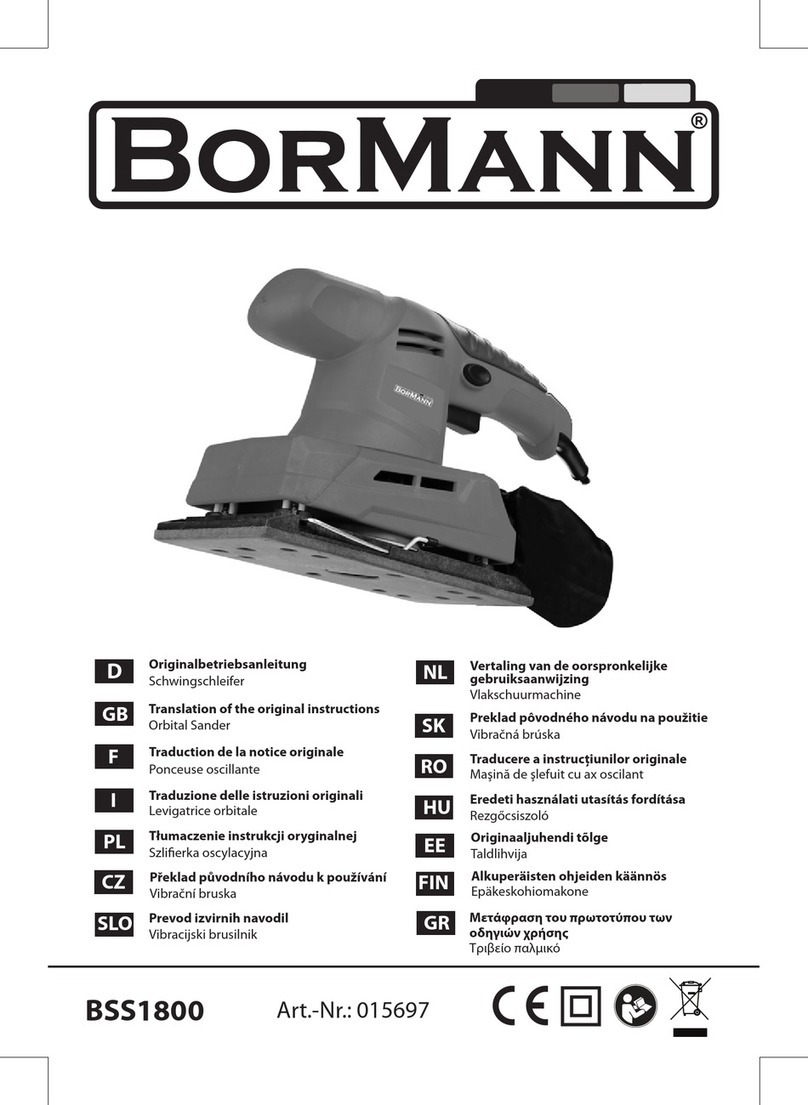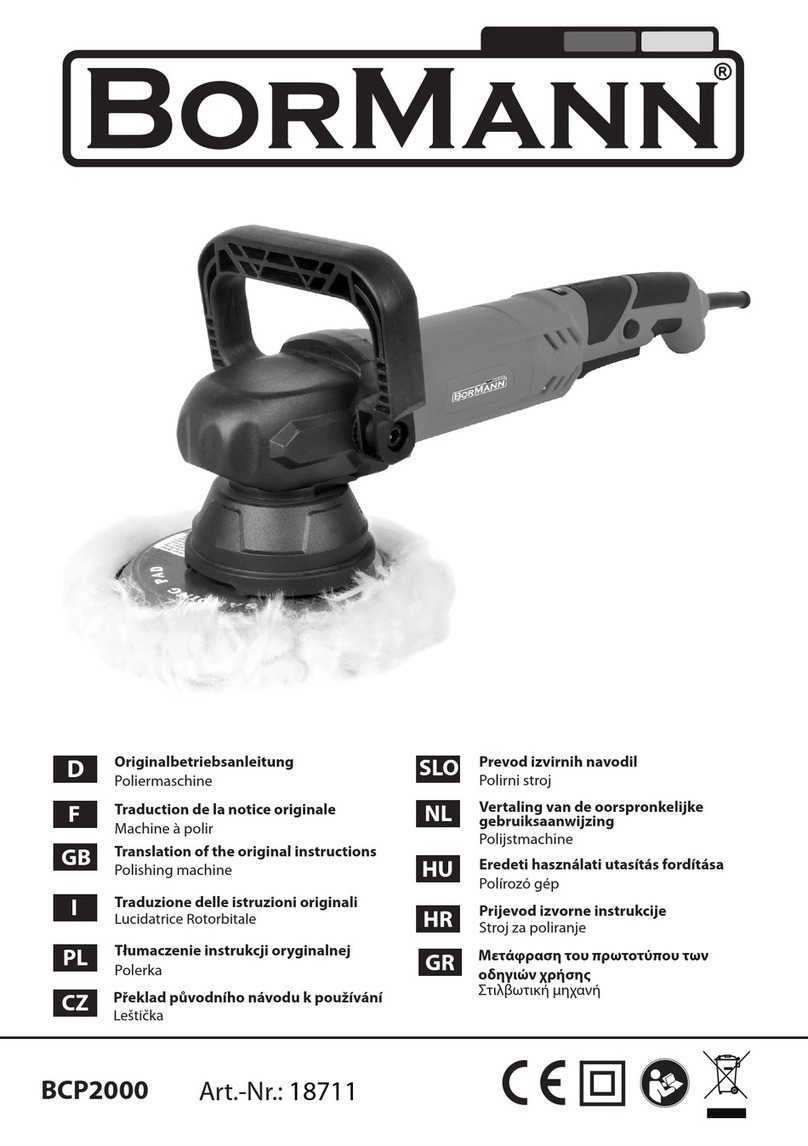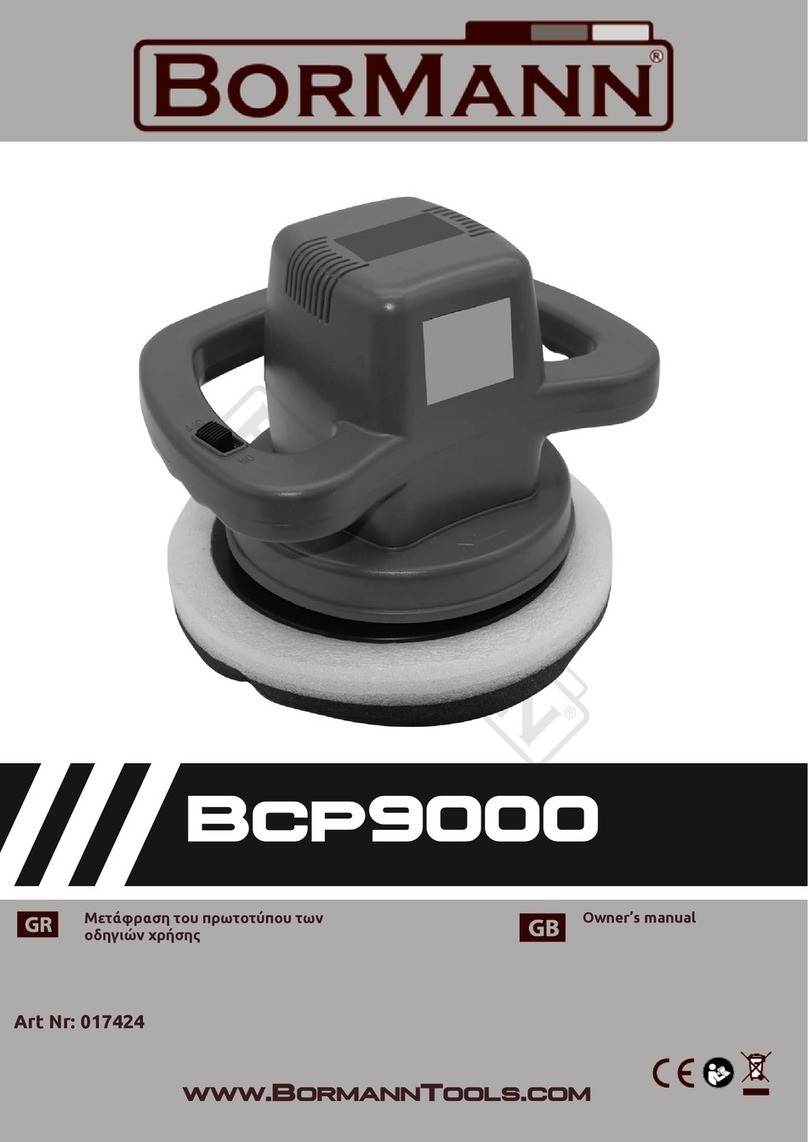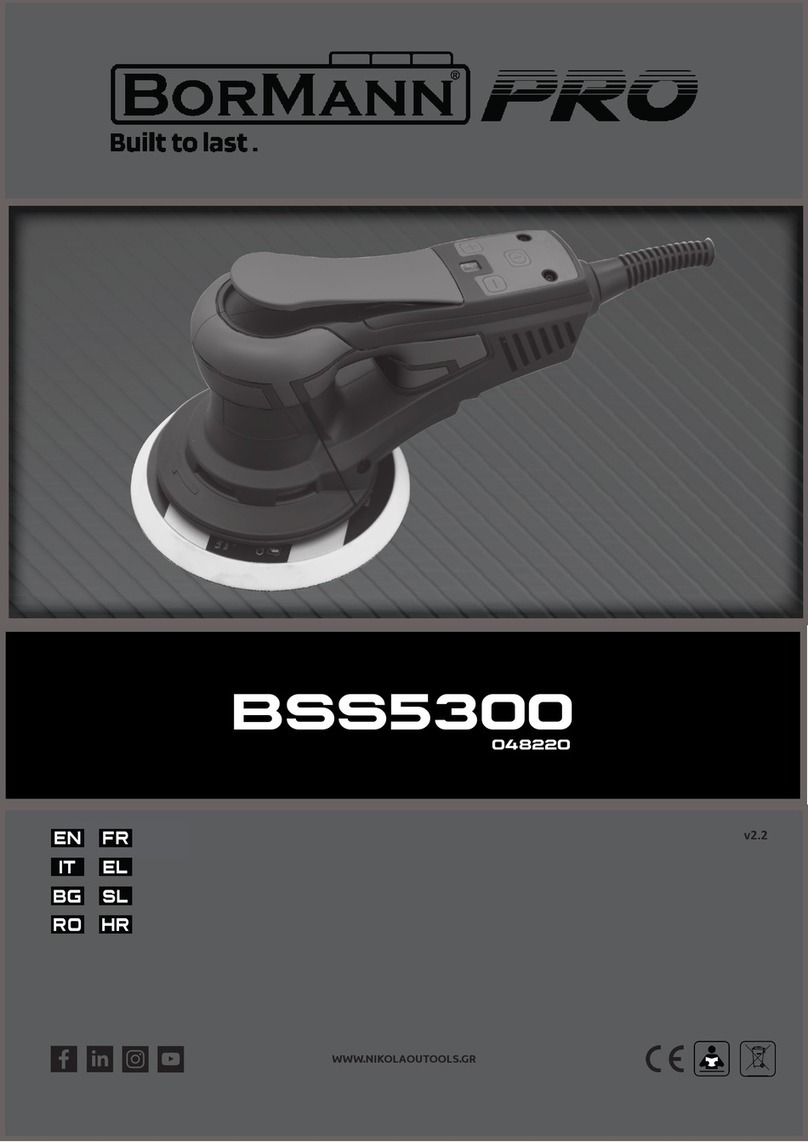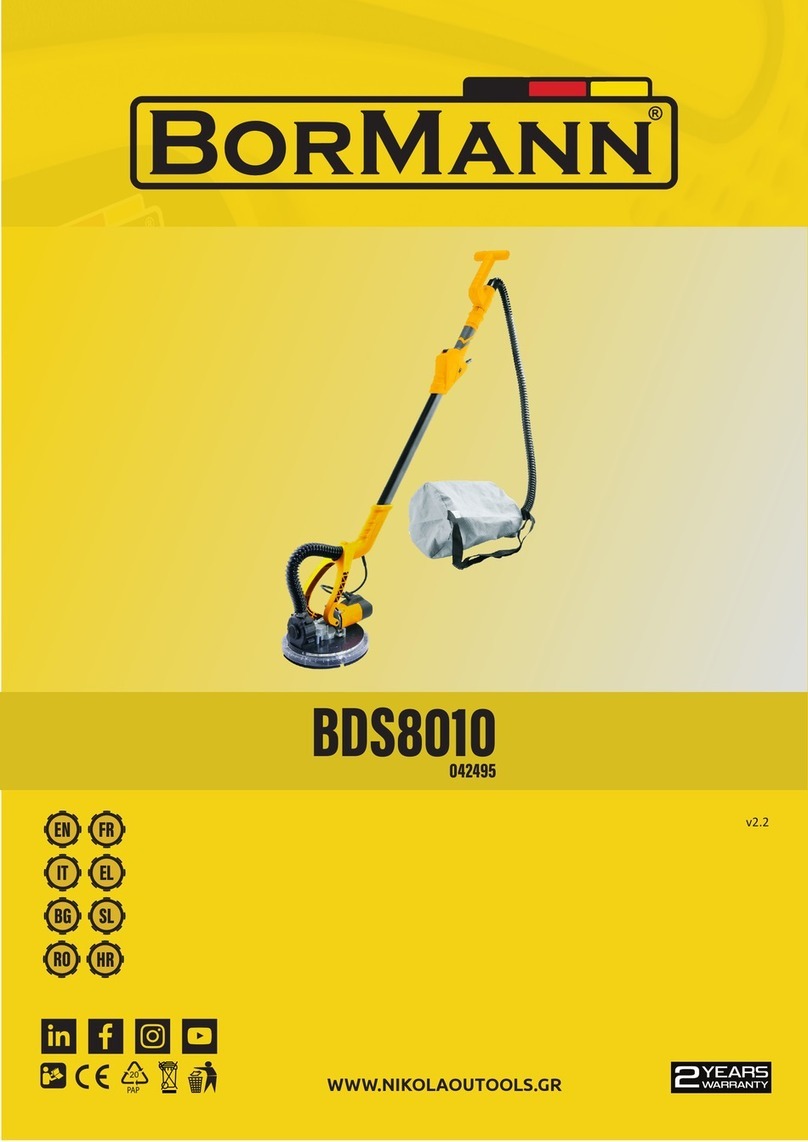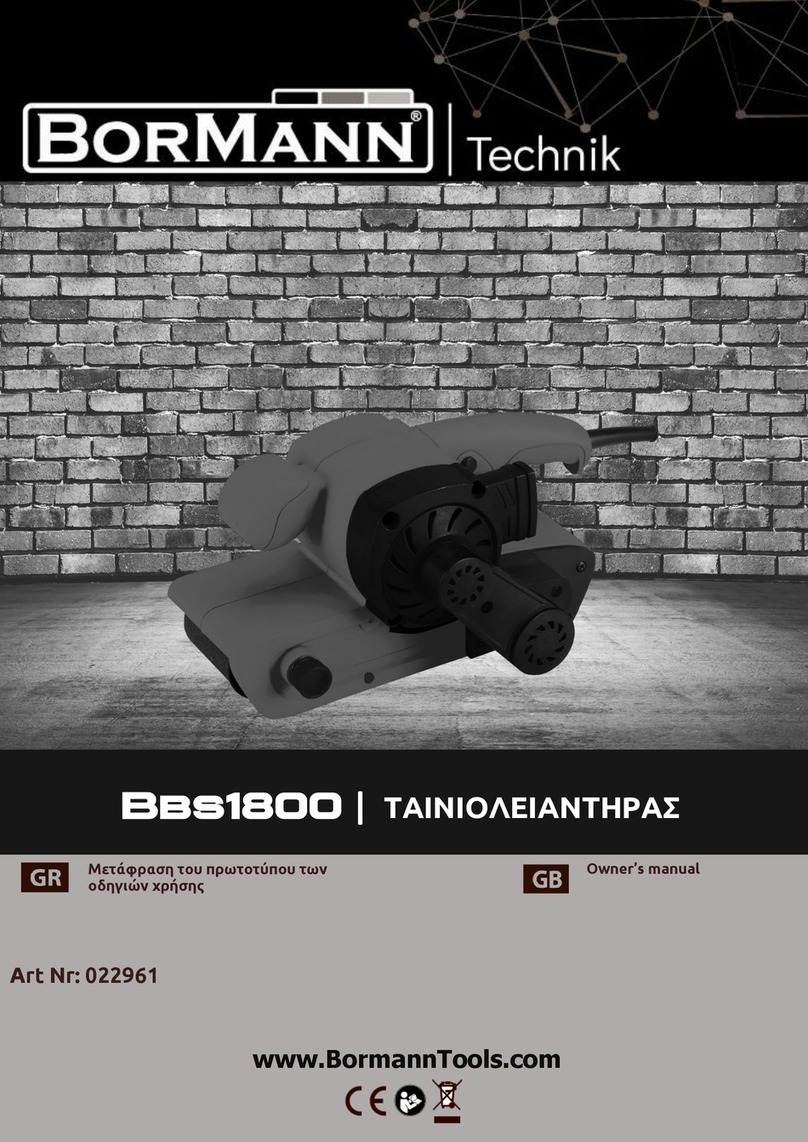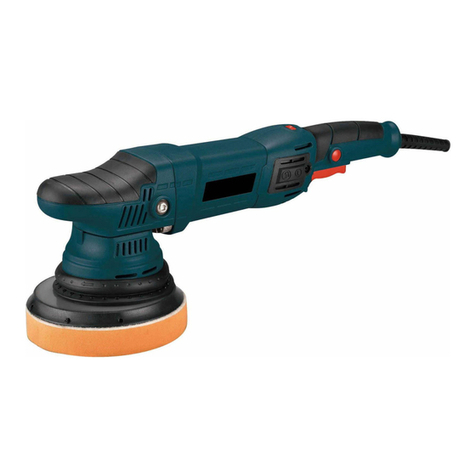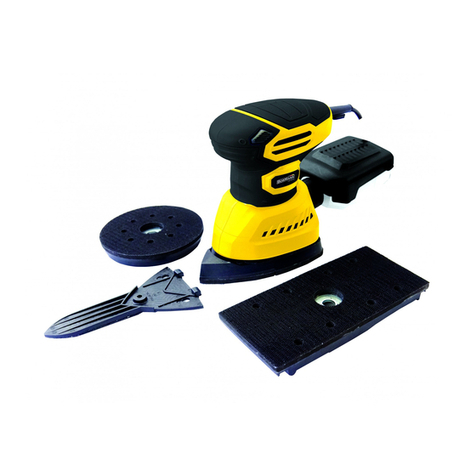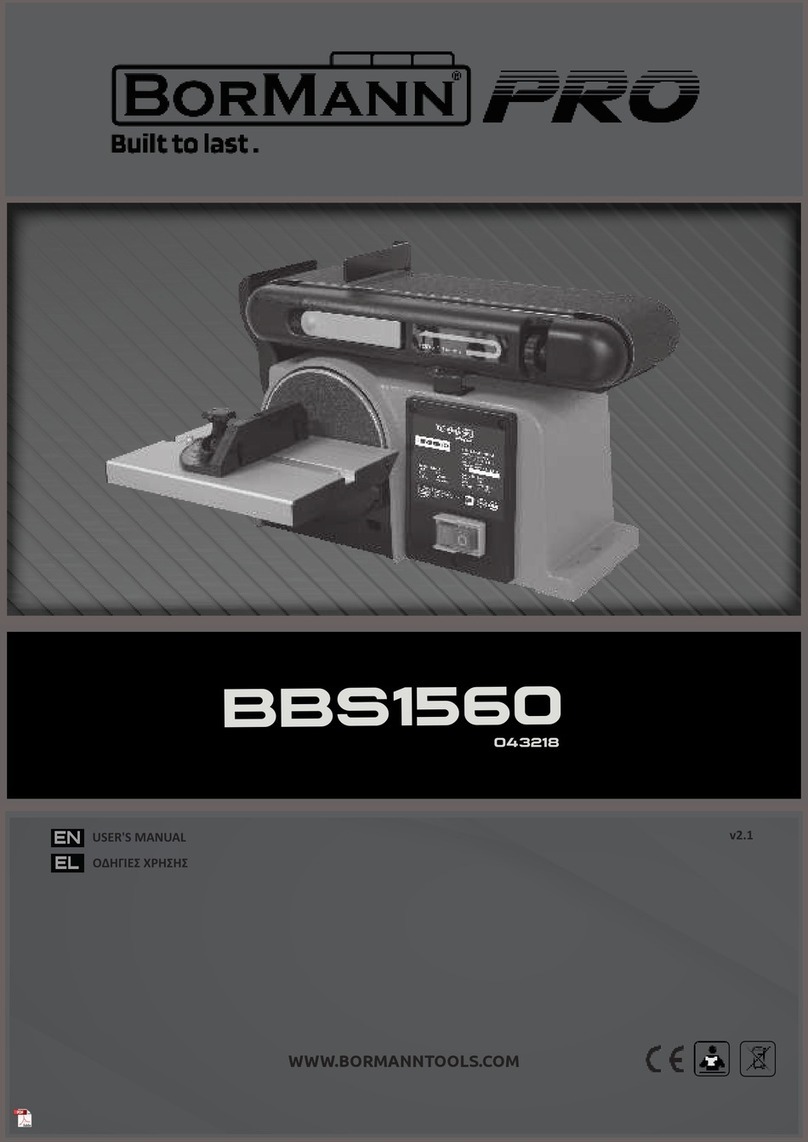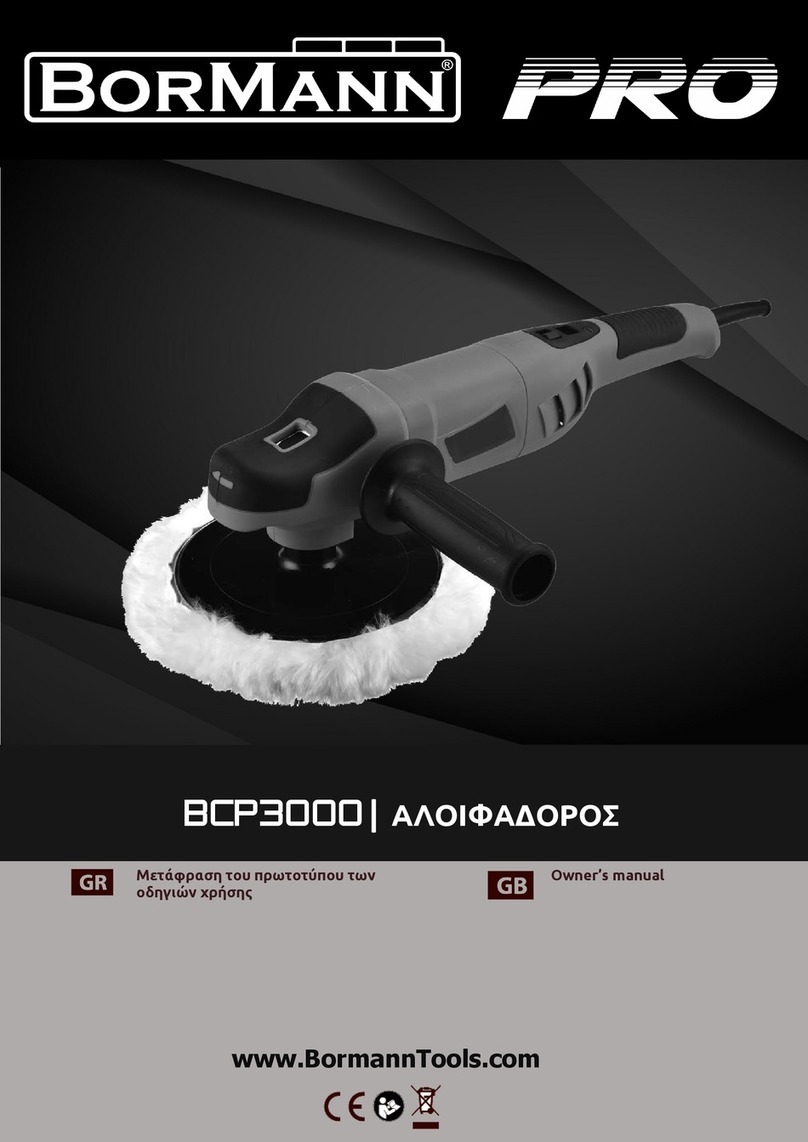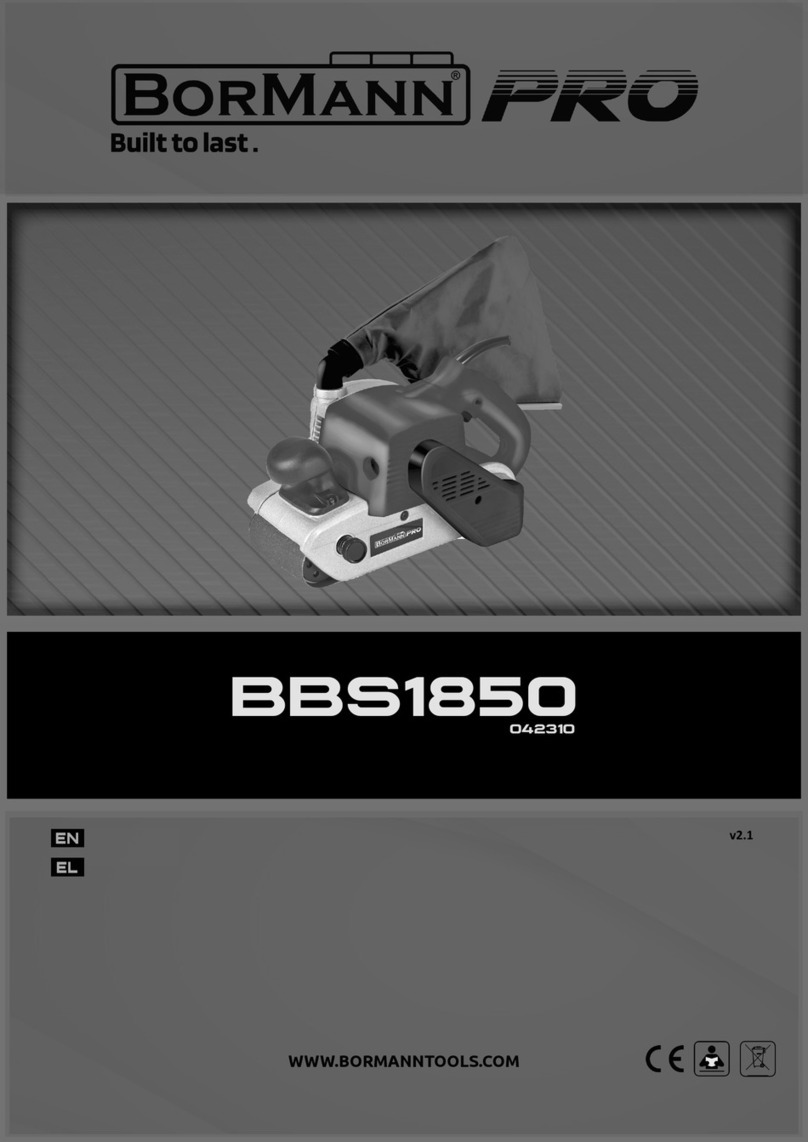
4
Intended Use
This burnisher has been designed for commercial use in industries and trades, surfaces processing such as, for example, burnishing, structuring, polishing,
brushing, smoothing, removing rust or burrs from steel or stainless steel, or non-metal materials. Bear in mind that treang wood surfaces is not allowed.
Understand and follow all safety rules and instrucons before using this tool. Please refer to the gures (A, B, C) in page 2 in order to familiarize yourself with
the major components of this tool before using it.
Common Warnings for Sanding, Wire Brushing or Pol-
ishing Operaons
a. This power tool is intended to funcon as a sander, wire brush or polisher.
Read all safety warnings, instrucons, illustraons and specicaons provided
with this power tool. Failure to follow all instrucons listed below may result
in electric shock, re and/or serious injury.
b. Operaons such as grinding or cung-o are not recommended to be
performed with this power tool. Operaons for which the power tool was not
designed may create a hazard and cause personal injury.
c. Do not use accessories which are not specically designed and
recommended by the tool manufacturer. Just because the accessory can be
aached to your power tool, it does not assure safe operaon.
d. The rated speed of the accessory must be at least equal to the maximum
speed marked on the power tool. Accessories running faster than their rated
speed can break and y apart.
e. The outside diameter and the thickness of your accessory must be within
the capacity rang of your power tool. Incorrectly sized accessories cannot be
adequately guarded or controlled.
f. Threaded mounng of accessories must match the grinder spindle thread.
For accessories mounted by anges, the arbour hole of the accessory
must t the locang diameter of the ange. Accessories that do not match
the mounng hardware of the power tool will run out of balance, vibrate
excessively and may cause loss of control.
g. Do not use a damaged accessory. Before each use inspect the accessory
such as abrasive wheels for chips and cracks, backing pad for cracks, tear or
excess wear, wire brush for loose or cracked wires. If power tool or accessory
is dropped, inspect for damage or install an undamaged accessory. Aer
inspecng and installing an accessory, posion yourself and bystanders away
from the plane of the rotang accessory and run the power tool at maximum
no-load speed for one minute. Damaged accessories will normally break apart
during this test me.
h. Wear personal protecve equipment. Depending on applicaon, use face
shield, safety goggles or safety glasses. As appropriate, wear dust mask,
hearing protectors, gloves and workshop apron capable of stopping small
abrasive or workpiece fragments. The eye protecon must be capable of
stopping ying debris generated by various operaons. The dust mask or
respirator must be capable of ltrang parcles generated by your operaon.
Prolonged exposure to high intensity noise may cause hearing loss.
i. Keep bystanders a safe distance away from work area. Anyone entering the
work area must wear personal protecve equipment. Fragments of workpiece
or of a broken accessory mayy away and cause injury beyond immediate
area of operaon.
j. Posion the cord clear of the spinning accessory. If you lose control, the cord
may be cut or snagged and your hand or arm may be pulled into the spinning
accessory.
k. Never lay the power tool down unl the accessory has come to a complete
stop. The spinning accessory may grab the surface and pull the power tool
out of your controL
I. Do not run the power tool while carrying it at your side. Accidental contact
with the spinning accessory could snag your clothing, pulling the accessory
into your body.
m. Regularly clean the power tool's air vents. The motor's fan will draw the
dust inside the housing and excessive accumulaon of powdered metal may
cause electrical hazards.
n. Do not operate the power tool near ammable materials. Sparks could
ignite these materials.
o. Do not use accessories that require liquid coolants. Using water or other
liquid coolants may result in electrocuon or shock.
SAFETY WARNINGS SPECIFIC FOR SANDING OPERATIONS:
a. Do not use excessively oversized sanding disc paper. Follow manufacturers
recommendaons, when selecng sanding paper. Larger sanding paper
extending beyond the sanding pad presents a laceraon hazard and may
cause snagging, tearing of the disc or kickback.
SAFETY WARNINGS SPECIFIC FOR POLISHING OPERATIONS:
a. Do not allow any loose poron of the polishing bonnet or its aachment
strings to spin freely. Tuck away or trim any loose aachment strings. Loose
and spinning aachment strings can entangle your ngers or snag on the
workpiece.
SAFETY WARNINGS SPECIFIC FOR WIRE BRUSHING OPERATIONS:
a. Be aware that wire bristles are thrown by the brush even during ordinary
operaon. Do not overstress the wires by applying excessive load to the
brush. The wire bristles can easily penetrate light clothing and/or skin.
b. If the use of a guard is recommended for wire brushing, do not allow any
interference of the wire wheel or brush with the guard. Wire wheel or brush
may expand in diameter due to work load and centrifugal forces.
KICKBACK AND RELATED WARNINGS
Kickback is a sudden reacon to a pinched or snagged rotang wheel, backing
pad, brush or any other accessory. Pinching or snagging causes rapid stalling
of the rotang accessory which in turn causes the uncontrolled power tool to
be forced in the direcon opposite of the accessory's rotaon at the point of
the binding.
For example, if an abrasive wheel is snagged or pinched by the workpiece,
the edge of the wheel that is entering into the pinch point can dig into the
surface of the material causing the wheel to climb out or kick out. The wheel
may either jump toward or away from the operator, depending on direcon
of the wheel's movement at the point of pinching. Abrasive wheels may also
break under these condions.
Kickback is the result of power tool misuse and/or incorrect operang
procedures or condions and can be avoided by taking proper precauons
as given below.
a. Maintain a rm grip on the power tool and posion your body and arm to
allow you to resist kickback forces. Always use auxiliary handle, if provided,
for maximum control over kickback or torque reacon during start-up. The
operator can control torque reacons or kickback forces, if proper precauons
are taken.
b. Never place your hand near the rotang accessory. Accessory may
kickback over your hand.
c. Do not posion your body in the area where power tool will move if
kickback occurs. Kickback will propel the tool in direcon opposite to the
wheel's movement at the point of snagging.
d. Use special care when working corners, sharp edges etc. Avoid bouncing
and snagging the accessory. Corners, sharp edges or bouncing have a
tendency to snag the rotang accessory and cause loss of control or kickback.
e. Do not aach a saw chain woodcarving blade or toothed saw blade. Such
blades create frequent kickback and loss of control.


